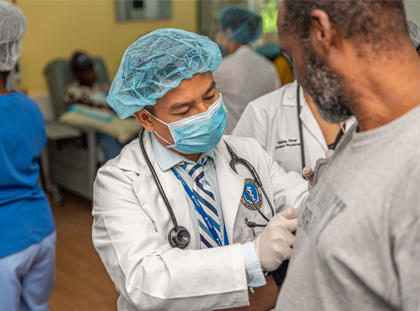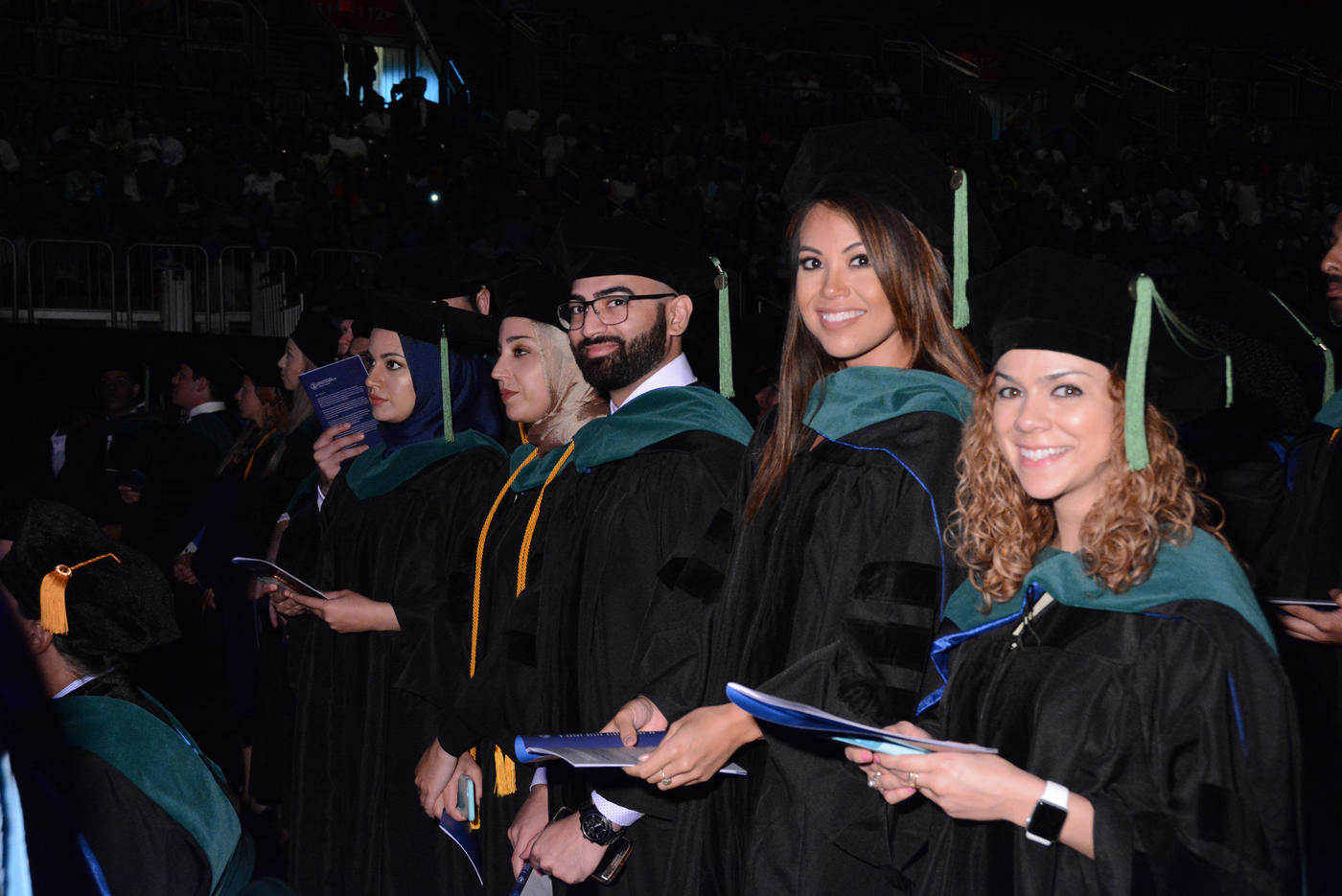Medical schools across the world prepare individuals to become physicians. While the process seems simple enough, the journey can be complicated, stressful, and exciting. Prior to starting medical school, you may want to know what to expect in your chosen program. You may ask yourself the following questions:
- How do I become a doctor?
- When do I take my licensing exams?
- What patient experiences will I have?
- Where will I be able to practice medicine?
- How long does the program take?
All these questions and more can be navigated with a little bit of research. A general timeline can be extremely helpful when looking through the med school curriculum. The timeline can help you put your future as a medical student in perspective. It can also provide insight to when to expect big milestones along the way.
Medical School Curriculum By Year
Most medical school curriculums follow the same structure, and the programs generally last four consecutive years. During those four years you will learn clinical medical knowledge, achieve numerous milestones, and develop your foundation for patient care. As we look at the medical school curriculum by year you will discover some specific highlights and things to look forward to.
Year 1
In your first year, you will learn the basics of med school. You will begin your journey by celebrating your entrance into the medical profession with the treasured White Coat Ceremony. Here, you will receive a coat with your university’s emblem and your name. The white coat serves as a precursor to the long coat that is a coveted professional accessory of graduated physicians.
Shortly after your white coat ceremony, you will begin learning in your medical school courses. It is crucial during the first year to establish a study group. The people you choose to collaborate with will help you prepare for your licensing exams, as well as serve as friends and support persons throughout your medical school career.
Your university has numerous resources you can access to help you through medical school. Student support services can offer guidance in how to navigate personal and career-type decisions. In your first year, you should begin to think about what medical specialties interest you, and you may want to know which ones fit with your career aspirations. Career counselors on campus can also be used to help guide you in finding the right fit(s) for you.
There are several other things you can begin thinking about in your first year of medical school. While it may seem that residency applications are a long way off, how and what you do during medical school can become critical aspects of your application. Some other things you may consider thinking about or doing in your first year of medical school include:
- Volunteering in your community or local hospitals
- Shadowing currently practicing physicians
- Seeking research opportunities
Year 2
While the first year of medical school is focused on the basics of becoming a doctor, the second year continues the core medical school curriculum and begins to prepare you more thoroughly for residency.
In this year, you will begin to build the foundation of clinical skills that will be needed for future physician and patient interactions. If you haven’t already, you should seek shadowing opportunities with physicians in specialties of interest. Research these specialties, and begin to narrow your list of preferred future medical practices. Year two is also a great time to begin and refine your curriculum vitae (CV) in preparation for residency application.
At the end of your second year of medical school, you should schedule and sit for the United States Medical Licensing Examination® (USMLE®) Step 1. This is the first of two medical licensing examinations you will need to prepare extensively for and pass prior to moving on with medical school. Scores on the USMLE are extremely important to residency directors. The scores can also impact your opportunities in varying medical specialties.
Year 3
You are now halfway through your time in medical school. This year is one that is much anticipated among medical students. In this year, you will begin clinical rotations where you will be able to apply the learning from years one and two to your medical practice. Clinical rotations can be used to further limit your specialty interest and help you to narrow your focus as you prepare for residency applications.
Now is the time to begin searching for residency programs in your specialties of interest. You will need to work with faculty members to determine who will be willing to write residency application letters of recommendation, and you will need to begin to gather the materials needed for your applications.
Year 3 is also the year for scheduling the USMLE Step 2 examination. While the USMLE can be taken in your fourth year of medical school, many students choose to take it in their third year. Remember that your scores on this examination will impact your marketability on your residency application.
Year 4
Welcome to your final year of medical school - the year you have been looking forward to since day one! In this year you will need to finalize your residency applications. There are several critical components to your residency application, one of the biggest being your personal statement. Your personal statement will be used in your residency applications to help potential residency programs understand your aspirations as a physician as well as your contributions to medicine thus far. Make sure to have several reviews of your personal statement from trusted professionals such as your career advisor or another trusted faculty member.
After completing your residency applications, you will need to submit them. Soon, you should hear about which residency programs want to interview you. Make sure you bring questions to your interviews to show your interest and to learn more about each program. Following your interviews, you will submit a preference list of programs to all institutions where you interviewed.
Match week occurs every March. In March, you will learn where you have been accepted for a resident position. After completing all four years of medical school and securing a residency program to continue your studies, you can celebrate all your accomplishments with your family and friends.
What is Covered Each Year of Medical School
Now that you have been given a timeline of the med school years breakdown, you may begin to think more deeply about what the medical school course curriculum looks like. Medical school curriculum can generally be viewed in two sections: Years 1 & 2 and Years 3 & 4.
Years 1 & 2
Years 1 & 2 of the medical school curriculum focus on medical sciences. Learning about the medical sciences provides the foundation of medical knowledge you will need as a physician. Some of the things that you will learn during the first years of medical school include:
- Health promotion
- Disease processes
- Physiological, anatomical, and biochemical processes of organ systems
- Hands-on labs and simulation opportunities
- Medical Research
Years 3 & 4
After completing Years 1 & 2, Years 3 & 4 calls for the application of prior medical knowledge. Your prior hands-on experiences will now be tested in hospitals and other healthcare facilities via clinical rotations.
You will learn extensively about the medical specialties available during your clinical rotation. Focusing on several of the top specialties can help you to determine which area you will want to investigate more deeply. These core specialty rotations include:
- Internal medicine
- Surgery
- Pediatrics
- Family medicine
- Obstetrics/gynecology
- Psychiatry
During your core specialty rotations, you should also have the opportunity to learn in subspecialty areas. Subspecialty areas may be designated to the type of patient care provided (i.e. critical care or emergency medicine). Other subspecialties may be directed toward the specialization of care for specific organ systems. Having these experiences will help you to determine the specialty or subspecialty in which you will seek residency placement at the end of your medical school career.
Outlining your four years in medical school can help you prepare for your future as a physician. From your white coat ceremony to residency match day, you will learn what you need to in order to practice medicine and care for your future patients.
Related Resources:



